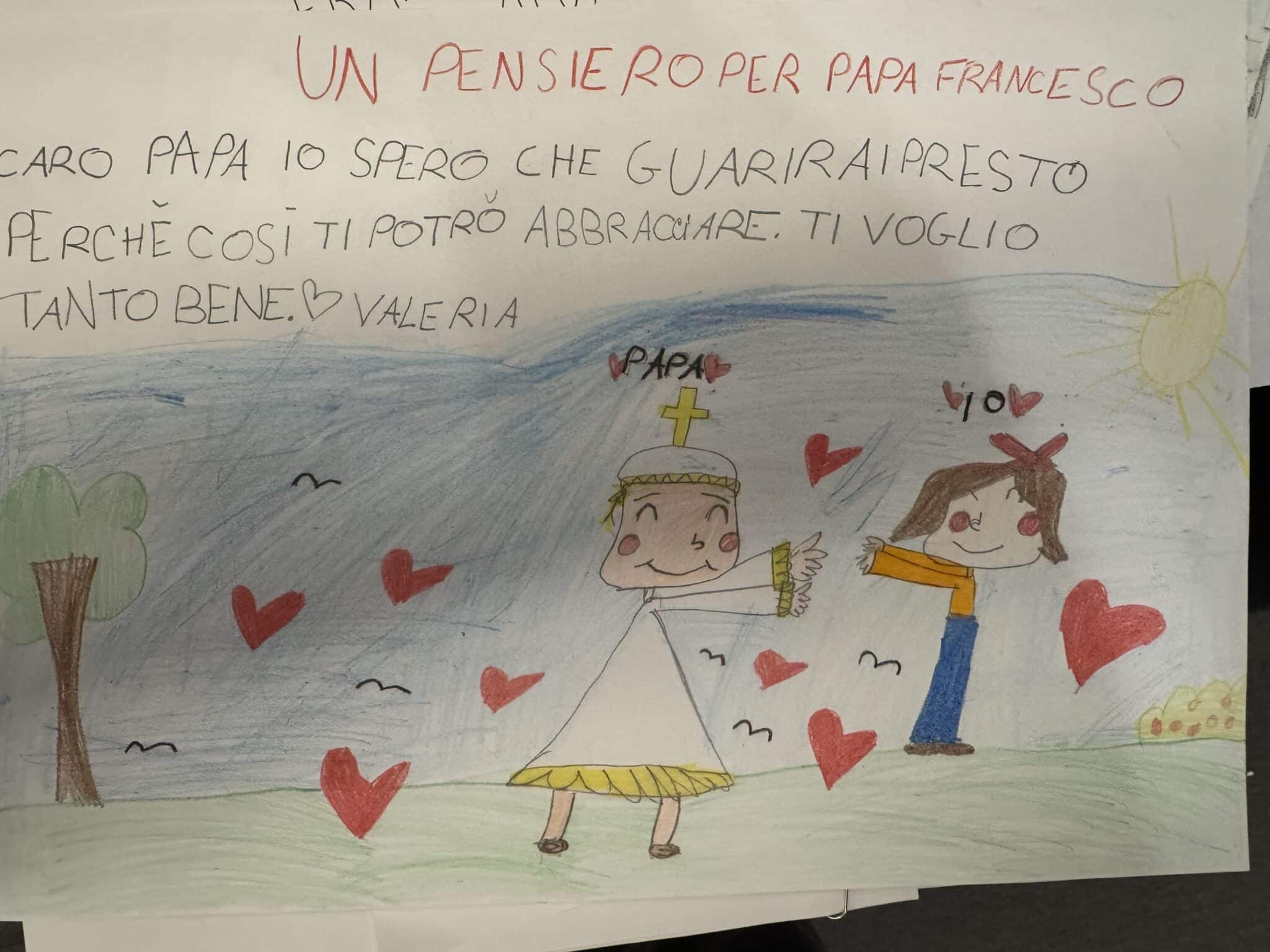We all know the story of Jesus’ birth in Bethlehem. In Scripture, each Gospel writer tells the story a little differently. Matthew begins his Gospel with “An account of the genealogy of Jesus the Messiah…” before setting down his telling of the Nativity story. Luke gives the most detailed and comprehensive account of the birth of Jesus, with great emphasis on the Marian aspect of the story.
Mark and John both begin with Jesus’ encounter with John the Baptist, skipping over the story of Jesus’ life prior to the events that led to his public ministry. John’s Gospel, in fact, presents a mystical account of Jesus’ entry into the world with the words: “In the beginning was the Word, and the Word was with God, and the Word was God” (1:1). For most of us, however, the Gospel stories, our traditions and even a few elements contributed by pious and not-so-pious authors have merged into one big story about the birth of Jesus.
We know that Jesus was conceived by the Virgin Mary and born in Bethlehem in the humblest of surroundings. We know that wise men from the East followed a star to honor the newborn king, that Joseph had dreams that helped him protect the child and his mother. Our songs and traditions incorporate some or all of these elements into our celebrations and occasionally embellish a detail or invent new stories altogether. “The Little Drummer Boy,” for example, will not be peeking at you from the pages of any Bible.
Christmas wasn’t quite “Christmas” that first year, though. It was simply Jesus’ birthday. While his mother and earthly father and a few foreign gentlemen had an idea that this was no ordinary child, most people were not attaching the word “Christ” to him just yet.
So while Jesus was growing up, he and his family didn’t celebrate Christmas. Their family life centered on the holy days of the Jewish faith they all embraced. Though the Gospel writers don’t always go to great pains to spell this out for us (there is really very little about Jesus’ childhood in Scripture), it is evident in the stories about the presentation in the Temple (remember Simeon and Anna?) and in the finding in the Temple (after Jesus’ three-day disappearance). We can’t say with certainty that Mary and Joseph didn’t celebrate Jesus’ birth day, but the word birthday appears just once in the Bible (Genesis 40:20), to refer to the pharaoh’s birthday.
When did the celebration we call Christmas really start? About 300 years after the birth of Jesus.
The Early Church
In its infancy, Christianity was not a popular religion. Believers met secretly to share the Scriptures, celebrate the Eucharist and encourage one another in the faith. Once Christianity was seen as its own religion and not simply one branch of Judaism (as the Romans first understood it), it lost the special privilege the Empire had long granted to Jews—to worship their one God to the exclusion of all others. Even to the exclusion of the Roman gods. Even to the exclusion of the emperor himself.
Although sacrificing to pagan gods and worshiping the emperor were no more palatable to the early Christians than to their Jewish neighbors, they were not exempt from the law. The persecutions of the first centuries of the faith stem from this basic incompatibility. Failure to worship the emperor was treason, and the punishment for treason was death—often a spectacular and gruesome death. Some of the early martyrs were thrown to the lions; some were crucified. One of the goriest tales we have comes from the Roman historian Tacitus. He relates that Nero had Christians rounded up, covered in tar and slowly burned alive to provide light and ambience for his lavish garden parties.
People who knew these martyrs were stunned by the horror of the persecutions, but even more impressed that people would sooner succumb to such a dreadful and certain fate than deny their faith in Jesus. Rather than having the deterrent effect the Romans had hoped for, the persecutions actually helped to spread the faith. Church Father Tertullian famously described this phenomenon by saying, “The blood of the martyrs is the seed of the Church.” Memorials were set up in honor of these certain saints, and believers would gather on the anniversary of their deaths (which were thought of as their “births” into eternal life) to celebrate the Eucharist.
Once Christianity was legalized by the Emperor Constantine with the Edict of Milan in 313 A.D., these feast days could be celebrated publicly. This happened slowly at first (you can imagine why). As believers began to share their faith, they realized that many of them had developed slightly different traditions. The days on which saints’ feasts were celebrated did not always align. Some saints were known only in their local communities while some had become famous throughout the Church.
Pope St. Julius I, whose papacy ran from 337 to 352, worked to make the celebrations of the universal Church more uniform. Saints’ feasts became part of the Church calendar, locally in the case of saints who were known only in a small area, and universally in situations where the saint’s fame had spread throughout the Church. And there was one last detail left to Julius: establishing the date of Christmas.
When Was Jesus Born?
During the time of Julius I, Christians were still arguing (sometimes violently) about whether Jesus was divine, and it is no surprise to learn that they did not always agree on the details of his life, either. One of these details was the exact date of Jesus’ birth. The Bible doesn’t mention a date, so there was no single authority that could end the controversy.
Several branches of the Church celebrated the day on different dates, each of which had its own rationale. Some tried to identify the astronomical event that led the Magi to Bethlehem and extrapolated the date from there. Others had ancient traditions that led them to celebrate a given date. Several of these dates clustered around late December and early January (though some differed wildly). It fell to Pope Julius to rule finally on the date when the Western Church would celebrate Christ’s birth. His choice was December 25.
This was not an arbitrary choice. In many regions, this date corresponded closely with when the feast was already celebrated. There was also a sound correlation with another feast on the liturgical calendar. But the single most persuasive reason for settling on late December was more political—there was a long-standing Roman celebration already being observed around that date.
The Roman Origins of Christmas
Despite such disastrous missteps as the destruction of the Temple, the crucifixion of Jesus and the use of humans as party lanterns, the Roman Empire had a vibrant culture. One of the biggest holidays celebrated by the Roman people (often to the chagrin of rulers from Augustus to Caligula) was Saturnalia. Saturn was the god of sowing, among other things, so there was some rationale for appealing to him during the shortest days of the year (the winter solstice falls on December 21 or 22) in hope that the sun might return again and provide life support for that agrarian culture.
Catullus called the Saturnalia “the best of days” (Catullus 14.15) for its deep roots in the celebration of the winter solstice and the rebirth of light and mirth in the heart of winter. The festival dates varied through the course of Roman history, but began as the feast day of Saturn (December 17) and his wife, Ops (December 19), both ancient Roman fertility deities. Saturn was the god of agriculture (merging later with the Greek god Kronos) while Ops was the goddess of plenty and mother earth. During the Roman Empire the ever-popular festival was extended to seven days, from December 17 through December 23.
In each Roman home, the master might wait on his own servants, and one of the slaves was commonly chosen as Saturnalicius Princeps (Master of the Saturnalia), who could order others around in a complete reversal of roles. On the final day (December 23), everyone exchanged small gifts including sigillaria (small, special-event pottery dolls) for the children and cerei (small candles) for adults.
Although the cultural observance of Saturnalia may have influenced the decision to set the date for Christmas on December 25, celebrating the birth of Christ in the middle of winter makes perfect sense. Christ is the intersection of all things. He brings the light into the darkness—when better to remember this than during winter’s longest nights? He brings eternity into time—how better to be mindful of this than to see the traces of ancient practices in our modern celebrations?
What better moment to reflect on both the brevity and great expanse of time than at the close of one year and the beginning of the next? And Christ is the intersection of East and West—the skygazing mystics of the East came to honor him; his birth occurred in Bethlehem because his parents traveled there to be counted for the Roman census. To situate the celebration of his birth between the ancient date of January 6, used in the Eastern Church, and the Roman winter festival combines the best of both.
The selection of December 25 as the date for Christmas is a profound reminder to us that ordinary things do not somehow “corrupt” what is holy. On the contrary, the Incarnation elevated this material world—and especially our human nature—to a new level of sanctity. The Church does not minimize Christmas by locating it on the date of a pagan feast; rather, it elevates that feast and the people who celebrated light and life and family in the centuries before Christ. It remembers that, though they did not have the same opportunity to believe in Jesus that we have today, they knew and honored what was best about humanity—the very humanity for whom Christ did not hesitate to die.
Jesus might have been born in the middle of May, for all we know from Scripture, but I agree with Pope Julius I—the quiet of winter is the best time to remember the occasion.
How does Christmas remind you of the sanctity of ordinary things? This Christmas as you decorate a common tree with even-more-common tinsel, consider how the birth of Jesus has changed everything.








